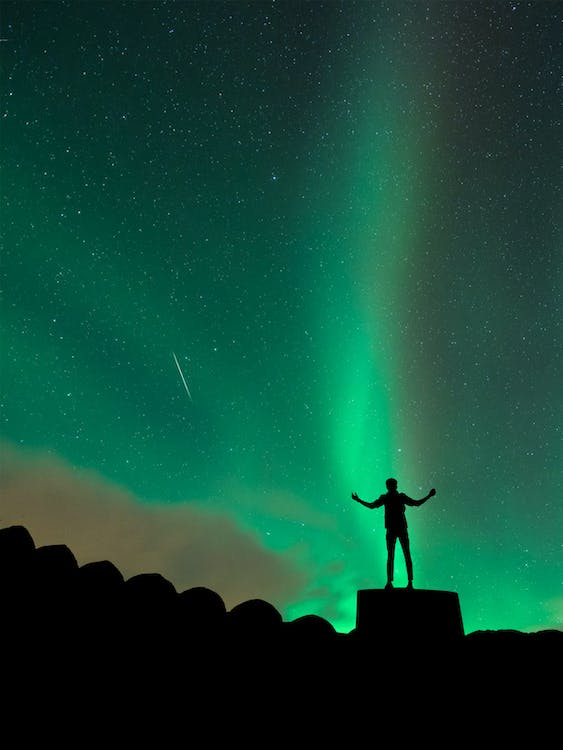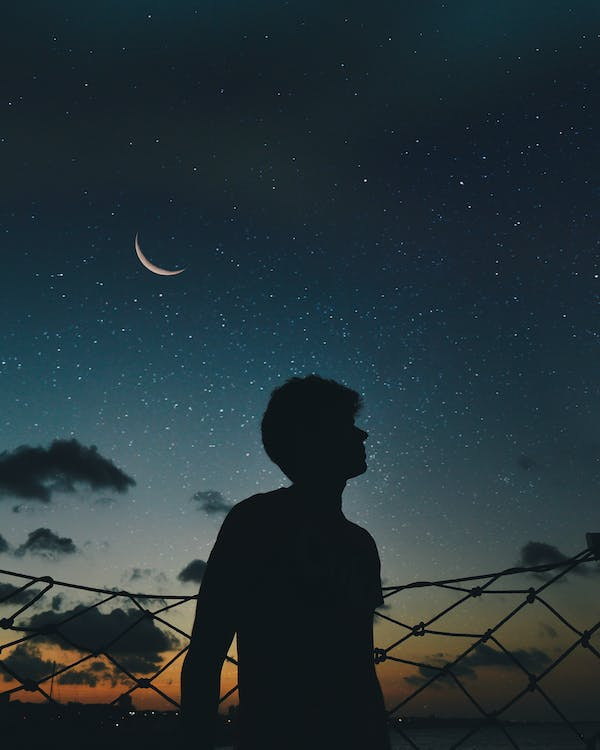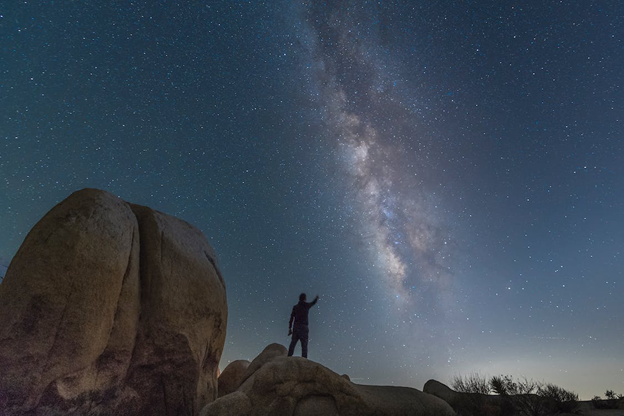The Mystical Allure of Celestial Events
Celestial phenomena, with their awe-inspiring grandeur, have always captured humanity’s imagination. From ancient tribes dancing under the night sky to modern individuals making wishes upon stars, these events evoke a profound sense of wonder and introspection.

Key Takeaways
- The vast expanse of the sky serves as a theater of nature’s most captivating performances, with celestial events being the star attractions.
- Throughout history, phenomena like shooting stars have been imbued with rich symbolism, from omens of change to harbingers of luck.
- Beyond the spiritual, these astronomical occurrences resonate deeply within the human psyche, stirring emotions ranging from awe to existential contemplation.
- Celestial events, timeless in their occurrence, serve as bridges connecting past traditions with contemporary interpretations.
Modern-Day Interpretations of Celestial Sightings
In today’s era, where spirituality often intersects with science, celestial events continue to hold significance, though perhaps manifested differently.
- Popular Media: Movies, literature, and music frequently reference shooting stars and other celestial events, often attributing them with romantic or aspirational symbolism.
- Digital Age Rituals: Modern rituals, such as sharing shooting star sightings on social media or using celestial emojis, reveal the continued allure of the cosmos.
- Spiritual Renewal: For many, especially in an increasingly digital world, gazing at the night sky offers a moment of spiritual renewal, grounding, and connection with the universe.

Stargazing vs. Digital Observations: The Changing Dynamics
While traditional stargazing had its own charm, technological advancements have brought the cosmos closer, yet have they also distanced us from the raw experience?
- Naked Eye vs. Telescopes: Traditionally, celestial events were witnessed with the naked eye, making them rare and special. Today, telescopes and apps allow for frequent and detailed observations.
- Digital Sharing: Platforms like Instagram or Twitter become flooded with images and videos during major celestial events, allowing for collective experience but possibly diluting personal moments of awe.
- Virtual Reality: With VR, one can now “experience” celestial events from the comfort of their homes, leading to debates about authenticity and emotional resonance.
A Historical Glimpse at Skyward Beliefs
For ancient civilizations, the sky was a canvas where the tales of gods, heroes, and monsters played out. These narratives, rooted in celestial phenomena, shaped cultures, beliefs, and daily lives.
- Cosmic Calendars: Many ancient civilizations, from the Mayans to the Babylonians, created elaborate calendars based on celestial events.
- Prophecies and Predictions: Eclipses, comets, and shooting stars were often seen as prophetic signs, leading to societal actions or changes.
- Sacred Alignments: Structures like the pyramids of Egypt or Stonehenge in England showcase humanity’s age-old fascination with celestial alignments.
From Oral Traditions to Astronomical Charts: The Evolution of Star Stories
The tales whispered under starlit skies have traveled through time, evolving into structured studies and detailed astronomical charts.
- Mythological Roots: Before the written word, oral traditions passed down tales of constellations and celestial events, embedding them in cultural consciousness.
- Astronomical Evolution: The advent of telescopes and written records transformed these tales into scientific studies, though the underlying wonder remained.
- Global Synthesis: As civilizations interacted, they exchanged star stories, leading to a rich tapestry of global astronomical lore.
Emotional Responses to Cosmic Phenomena
Celestial events, in their ephemeral beauty, evoke a cascade of emotions. From wonder to contemplation, the sky’s performances touch the deepest chords of human emotions.
- The Awe Factor: The sheer vastness and beauty of celestial phenomena often evoke feelings of awe and insignificance, placing human existence in the broader cosmic perspective.
- Existential Reflection: Events like meteor showers or solar eclipses can lead to existential thoughts, pondering life’s mysteries and human purpose.
- Joy and Celebration: In many cultures, certain celestial events become reasons for joy, celebration, and community gatherings.
The Emotional Spectrum of Celestial Observations
From the serenity of watching a starlit night to the adrenaline rush of witnessing a meteor streak, celestial observations are an emotional roller-coaster.
- Serenity and Peace: The calm expanse of the night sky offers a peaceful retreat from the chaos of daily life.
- Curiosity and Quest: Celestial events stir curiosity, leading to quests for knowledge, understanding, and even spiritual enlightenment.
- Fear and Apprehension: Historically, unexpected celestial events like comets sometimes evoked fear and were seen as bad omens.

Cultural Narratives and Shooting Stars
A shooting star, a fleeting streak of light, holds myriad interpretations across cultures. While some see it as a lucky omen, others view it as a soul ascending to the heavens.
- Universal Wonder: Despite cultural differences, the sight of a shooting star evokes wonder universally, highlighting the shared human experience.
- Varied Interpretations: From souls of the departed to falling angels, shooting stars are rich in symbolism and varied narratives.
- Rituals and Wishes: Many cultures have rituals associated with shooting stars, from making wishes to reciting special prayers.
Shooting Stars: Messages, Omens, or Mere Spectacles?
A shooting star’s fleeting journey across the night sky has been interpreted in various ways, reflecting humanity’s quest for meaning in the cosmos.
- Messengers from the Heavens: Some cultures see shooting stars as messages from the divine, perhaps answers to prayers or signals of significant events.
- Omens of Change: Historically, shooting stars were sometimes interpreted as omens heralding change, be it good or bad.
- Spectacles of Science: From a scientific viewpoint, shooting stars or meteors are space debris burning up in Earth’s atmosphere, yet they continue to captivate imaginations.

Unraveling Cosmic Etiquettes and Rituals
Over time
, societies have established customs and rituals to honor and interpret celestial phenomena. These practices help ground the ethereal experience, connecting the heavens to everyday life.
The Timing and Significance of Shooting Star Sightings
The moment a shooting star is witnessed, along with the contextual circumstances, can deeply influence its perceived meaning.
- Night’s Timeline: Some beliefs suggest that a shooting star’s appearance early in the night holds a different meaning than one seen at dawn.
- Celestial Events: The presence of other cosmic events, such as planetary alignments or lunar phases, can modify interpretations of shooting star sightings.
- Personal Context: Personal events occurring simultaneously, such as birthdays or anniversaries, can lend unique significance to the shooting star experience.
The Role of Celestial Symbols in Modern Communication
As society grows more digitized, celestial symbols find new life in our screens, bridging the ancient with the contemporary.
- Star Emojis and Digital Expression: Celestial emojis, particularly shooting stars, are commonly used to express wonder, hope, or dreams on digital platforms.
- Online Communities: Digital platforms host communities where enthusiasts share their celestial experiences, interpretations, and photos, connecting individuals globally.
- Digital Rituals: Modern rituals, like “star mapping” apps that allow users to “name” stars or document shooting star sightings, offer digital-age methods of connecting with the cosmos.

FAQs
How have various cultures interpreted shooting stars historically?
Historically, shooting stars have held a revered place in many cultures. From being seen as tears of gods to souls transitioning to the afterlife, these celestial streaks have been the center of countless legends, myths, and interpretations. Ancient Greeks, for instance, believed them to be rising or falling human souls, while some Native American tribes viewed them as a signifier of a notable event or change on the horizon.
Can emotional experiences be connected to celestial sightings?
Absolutely. Witnessing celestial events, especially rare ones, can evoke a plethora of emotions ranging from awe to introspection. The vastness of the cosmos, contrasted with the fleeting nature of events like shooting stars, often leads to feelings of humility, wonder, and sometimes even existential contemplation.
What spiritual beliefs exist around the act of accidentally witnessing a shooting star?
Many cultures and spiritual practices believe that witnessing a shooting star, especially unintentionally, carries special significance. It is often seen as an omen or a message. In some traditions, it’s considered a time to make a wish, while in others, it might be a sign of change, good luck, or a cosmic affirmation.
How do celestial events shape our broader understanding of the universe?
Celestial events, in their beauty and mystery, often push humans to ponder the broader questions of existence, purpose, and place within the universe. They serve as reminders of the grandeur of the cosmos and the intricacies of its workings, which, in turn, has historically led to both spiritual reverence and scientific curiosity.
Are there collective events or gatherings centered around celestial phenomena?
Yes, there are many events and gatherings, both ancient and modern, centered around celestial phenomena. From ancient solstice celebrations that honor the sun’s journey, to modern-day “star parties” where enthusiasts gather to stargaze, humanity has always found reasons to come together under the celestial canopy.
References:
Ridpath, Ian. “Star Tales.” Lutterworth Press, 1988.
Krupp, E.C. “Echoes of the Ancient Skies: The Astronomy of Lost Civilizations.” Courier Corporation, 2003.
Campion, Nicholas. “The Great Year: Astrology, Millenarianism, and History in the Western Tradition.” Penguin Books, 1995.
Leave a Reply